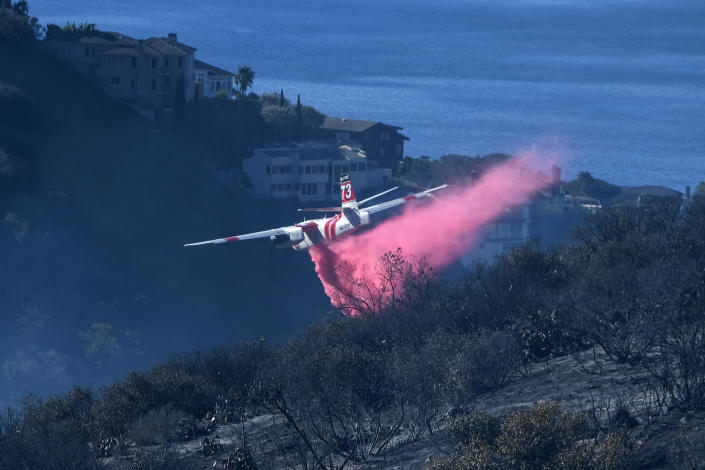WASHINGTON (AP) — Transportation Secretary Pete Buttigieg on Thursday launched a $1 billion first-of-its-kind pilot program aimed at helping reconnect cities and neighborhoods racially segregated or divided by road projects, pledging wide-ranging help to dozens of communities despite the program’s limited dollars.
Under the Reconnecting Communities program, cities and states can now apply for the federal aid over five years to rectify harm caused by roadways that were built primarily through lower-income, Black communities after the 1950s creation of the interstate highway system.
New projects could include rapid bus transit lines to link disadvantaged neighborhoods to jobs; caps built on top of highways featuring green spaces, bike lanes and pedestrian walkways to allow for safe crossings over the roadways; repurposing former rail lines; and partial removal of highways.
Still, the grants, being made available under President Joe Biden’s bipartisan infrastructure law, are considerably less than the $20 billion the Democratic president originally envisioned. Advocacy groups say the money isn’t nearly enough to have a major impact on capital construction for more than 50 citizen-led efforts nationwide aimed at dismantling or redesigning highways — from Portland, Oregon, to New Orleans; St. Paul, Minnesota; Houston; Tampa, Florida; and Syracuse, New York. Meanwhile, some Republicans, including possible 2024 presidential contender Florida Gov. Ron DeSantis, have derided the effort as the “woke-ification” of federal policy, suggesting political crosswinds ahead in an election season.
Flanked by Black leaders at the site of a soon-to-start rapid bus line in Birmingham, Alabama, Buttigieg highlighted the potential of federal infrastructure money to boost communities. Close to half of Birmingham's population lives within one-half mile of planned stations along the new 15-mile bus corridor. City leaders say that will open up access around I-65, which cuts through the city's Black neighborhoods, providing connections to jobs in the corridor as well as the University of Alabama at Birmingham and other schools.
“Transportation can connect us to jobs, services and loved ones, but we‘ve also seen countless cases around the country where a piece of infrastructure cuts off a neighborhood or a community because of how it was built,” Buttigieg said.
“We can’t ignore the basic truth: that some of the planners and politicians behind those projects built them directly through the heart of vibrant populated communities,” he said. “Sometimes as an effort to reinforce segregation. Sometimes because the people there have less power to resist. And sometimes as part of a direct effort to replace or eliminate Black neighborhoods.”
He described Reconnecting Communities as a broad “principle” of his department — not just a single program — to help remake infrastructure, with many efforts underway.
The Transportation Department has aimed to help communities that feel racially harmed by highway expansions, with the Federal Highway Administration last year taking a rare step to pause a proposed $9 billion widening project in Houston, partly over civil rights concerns. That move likely spurred action in other places such as Austin, Texas, where environmental and racial justice groups recently filed a lawsuit to force the Texas transportation agency to better lay out the impacts of a proposed highway expansion there.
Buttigieg, a former mayor of South Bend, Indiana, who unsuccessfully ran for president in 2020, drew fire from some Republicans earlier this year when he said the federal government had an obligation to address the harms of racist design in highways. “There’s trees they’re putting in, they’re saying that highways are racially discriminatory. I don’t know how a road can be that," DeSantis said in February, dismissing it as “woke.”
In his remarks Thursday, Buttigieg pushed back at critics, noting that “there is nothing sacred about the status quo" with roads and bridges.
“They are not divinely ordained; they are decisions," he said. “And we can make better decisions than what came before."
Under the program, $195 million in competitive grants is to be awarded this year, of which $50 million will be devoted for communities to conduct planning studies.
The department will also launch a “Thriving Communities” initiative to provide technical support for potential projects that serve disadvantaged communities alongside the Housing and Urban Development Department.
The Transportation Department has previously estimated it could help as many as 20 U.S. communities under the new program to remove portions of interstates and redesign streets by tapping into other transportation funds. According to the department, communities that win the Reconnecting Communities grants but still need additional funds will be prioritized in their applications for other pots of federal transportation money. Dozens more communities could derive benefit from the planning grants.
“Prior to 2021, the idea that we would deal with highway infrastructure that has divided communities was very much a fringe idea," said Ben Crowther, coordinator for the Boston-based Freeway Fighters Network, which is supported by the Congress for the New Urbanism. “The Biden administration has really transformed that into mainstream thinking. We are thinking now this is something that is possible — that you can remove a highway and instead build safe streets that are walkable, add housing and address other community needs besides travel time.”













